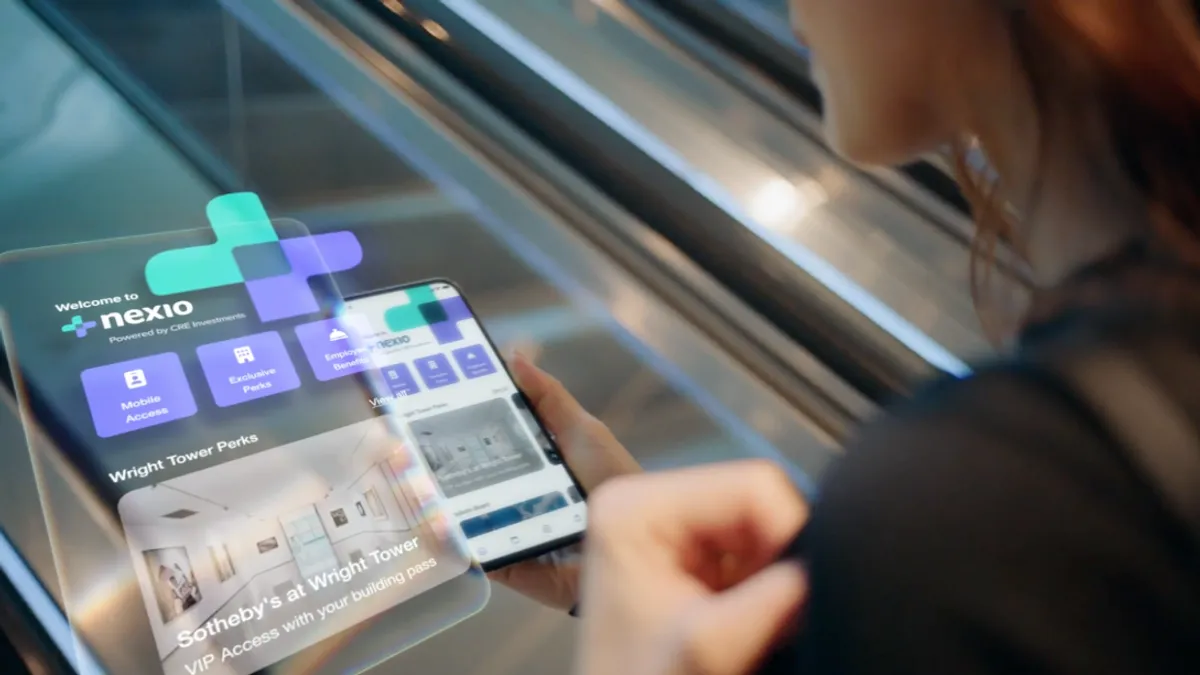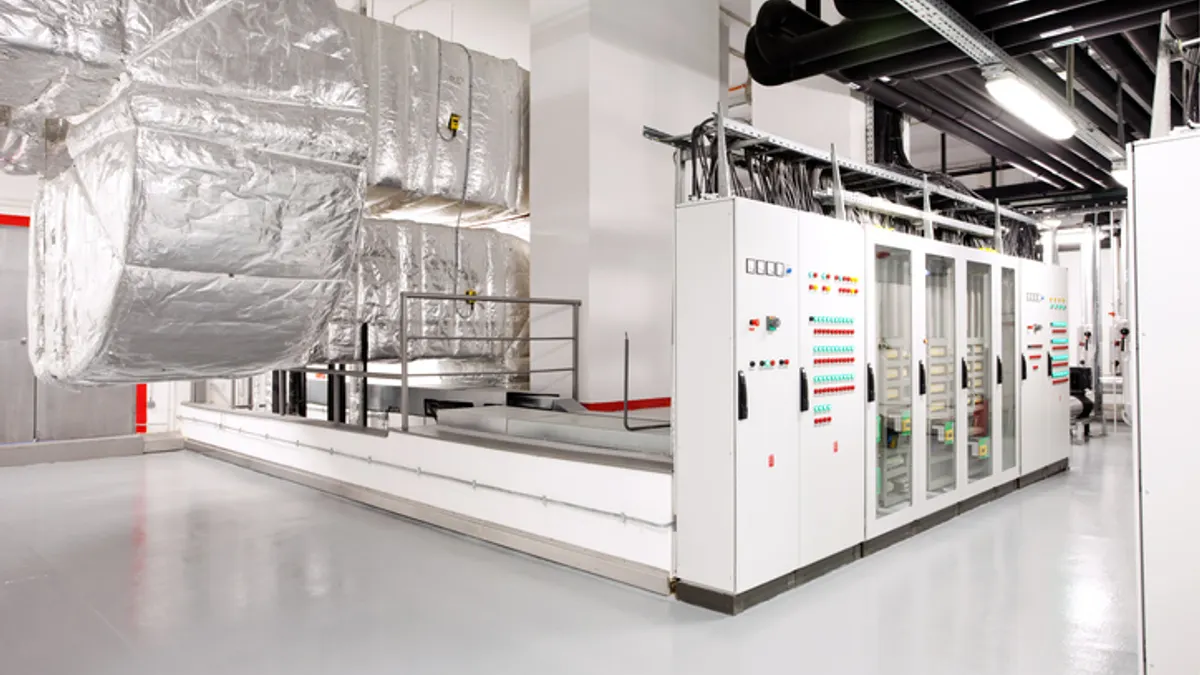In March 2021, VTS acquired Rise, a property experience and tenant platform used by landlords that include Blackstone, Hines and CIM Group. VTS, which saw that acquisition as an opportunity to build a larger asset experience for both landlords and occupiers, immediately set out to push the platform to its existing client base.
At the time, VTS said its goal was to use Rise to create an end-to-end commercial real estate management solution. The company drove closer to that goal when it acquired tenant experience platform Lane for $200 million in October 2021.
VTS Activate’s launch two years later combined Rise’s technology with Lane, adding tenant experience to the mix and enabling the company to bring all building stakeholders together.
“We wanted to consolidate and create this one-stop-shop, and saw great opportunity with Lane, based out of Toronto,” Prasan Kale, managing director of VTS Activate and former Rise CEO, said. “They had a data platform that was curated to more of a tenant-centric offering. So, it’s not just what’s important to the landlord, base building or property manager, but also what’s important horizontally to the tenanted population and the tenant themselves.”
The overarching strategy for VTS Activate centers on giving building tenants, operators and owners a single app. The app provides tenants with building access and information, flex space scheduling and booking, and maintenance requests. It also gives owners and operators input data to generate insights on tenant satisfaction, lease renewals and partnerships.
“Our whole play was [that] if we can take a lot of those technologies and consolidate them into one native property operations solution, we will have created value to the property manager as well as the user. Ultimately it’s an adoption game,” Kale said.
Likening the situation to a tree falling in the forest and nobody being around to hear it, Kale noted that consolidating powerful management tools is ”useless” if users do not adopt the application.
“Give the user a remote control for the building. Let them do everything that they would have otherwise had to do — a phone call, an email, a website or another app — so that they stay on your platform. And, at the end of the day, the property manager, landlord or owner … has an ultimate megaphone into that user base,” Kale explained.
The company is now working to scale its solutions and bring tenant- and building data-driven insights to real estate stakeholders. Last March, VTS secured $150 million in debt financing from CIBC Innovation Banking to accelerate its product stack’s reach across the market. The fundraise brings VTS’ valuation to $1.7 billion.
“Our whole play was [that] if we can take a lot of those technologies and consolidate them into one native property operations solution, we will have created value to the property manager as well as the user. Ultimately it’s an adoption game.”

Prasan Kale
Managing director, VTS Activate
VTS added further fuel to that fire in September, raising $125 million in a series E round. The financing, which included $100 million in equity, gave CBRE’s brokers and property managers access to the VTS platform.
“We think we're going to have the earliest indication of tenant demand versus anybody else in the market,” said Emma Buckland, global president of CBRE’s Property Management business lines. “Both pieces are really important in terms of marketing and the leasing side.”
“But then on the tenant insights side, being able to use Host powered by VTS across all of our property managed buildings means that we're going to be able to look at tenant sentiment, alongside occupancy, leasing and marketing data, so that we can really start to understand not just how to find tenants, but also how happy they are and how much they're using the building,” she added.
Bob Sulentic, president and CEO of CBRE, told the Wall Street Journal that as a result of the partnership, the firm would hand off some services to VTS, and use its software to improve CBRE’s own business functions. “One of the things we’re doing more and more aggressively is investing in companies that do things that we don’t do or do things better than we do,” he said.
CBRE, which is piloting the partnership with VTS, has begun to integrate occupancy information into its leasing processes, Buckland said. She added that the firm has already started to gain real-time results on leasing activity and will increasingly use VTS technology to provide its users with the earliest indicators and information on tenant demand.
Buckland stated CBRE will use VTS’ technology to capture tenant demand for a quicker and more automated view of the marketing side. CBRE is also moving forward with its plan to incorporate occupancy data and tenant experience into its property management business.
“On the property management side, I think we will be in a position to take this to market in a big way from August,” Buckland said. “The third piece is bringing together investor leasing and property management solutions, so that we can put tenant sentiment at the heart of the leasing [and] better predict and ultimately impact renewal outcomes, retention, etc.”
“All of those things together allow CBRE to think about itself as a single revenue team with leasing, marketing and property management. That would give a singular view of how we drive revenue in the asset itself,” she said.
Kale noted the partnership enables CBRE to understand how a property runs on a granular level, and to combine property operators, tenant experience, leasing and marketing into a single system. For example, insights obtained by aggregating occupancy sensor data, along with building access and amenity sign-up app data, can determine how occupied or used spaces are in order to evaluate capital expenditure projects.
Kale further explained how leveraging user app data, such as the amount of demand for certain activities or amenities, could drive expense planning for building operators and managers.
“You had an ice cream social and 10 people showed up. Do you want to keep doing ice cream socials? Because when you did the beer and wine tasting, 100 people showed up. What's a beneficial use of your dollars from an event standpoint? These are all data points that were anecdotes in the past that were like, ‘I think people came to the ice cream social.’ Well, no! Let's use real data from the platform to inform our decisions, moving forward,” he said.
VTS said that in addition to expense planning, the integration will provide insights on tenant renewals, as well as new deal pipelines and prospects, which it expects will help reduce repetitive data entry.
Kale added these insights can now also be used to drive decision making on a larger scale as VTS continues to expand its integrations and grow the volume of user data on its platform through its partnership with CBRE and firms like MRI Software.
Portfolio owners and operators are no longer making decisions on a building-by-building level. “Portfolio-level decisions are now being made, and we’re measuring all the buildings with the same yardstick,” Kale said.
Correction: A previous version of this article misstated when VTS acquired Rise. It was acquired in March 2021.


















